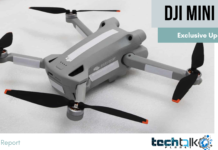
Lowering the CPU’s and SSD’s latency.
The updated Computational Storage Device (CSD) from Samsung might become yet another crucial component in High-Performance Computing (HPC) scenarios. With the use of an AMD Xilinx Versal FPGA, Samsung claims that their new product would cut calculation times by 50%, power consumption by 70%, and CPU usage by 97.5% when compared to the cost of operating traditional SSD devices for frequently accessed data. Just now, the SmartSSD became smarter.
Samsung’s second-generation SmartSSD can analyse data on its own thanks to the recent AMD-Xilinx marriage, which was consummated on February 14th like any other mainstream love tale. While it may appear that this is an instance of solving a problem that doesn’t exist, it really resolves one of the most critical bottlenecks in HPC: the flow of data between various components of the compute pipeline.
Data processing takes place immediately within the SSD, eliminating the need to move information back and forth between storage banks. Due to the fact that there are no additional trips between the central processing unit and the data storage device itself, this not only frees up bandwidth for the flow of other data. Additionally, it frees up the system’s CPUs so they may focus on tasks that are more performance-critical instead of handling data reads and writes to the CSD’s memory banks.
In 99 per cent of cases, the end user may not even notice the cost, but as the volume of processed data grows, the system becomes more taxed while reading and writing the data. Given the extraordinary compute density of today’s systems, shifting even a modest amount of computation to a component that is more passive than the CPU helps to disperse the heat produced more effectively.
The Arm processors incorporated into Samsung’s second-generation SmartSSD are especially well-suited to the low-power, low-temperature conditions of an SSD deployment inside of a supercomputer.
Samsung states that the CSD is primarily aimed at the AI/ML inferencing market, business intelligence analysis, big data analytics, video transcoding, financial services, genomics, search queries, and transparent compression.
The first-generation SmartSSD’s successful commercialization in partnership with AMD, according to Jin-Hyeok Choi, Executive Vice President and Head of Memory Solution Product & Development at Samsung Electronics, “demonstrated that the computational storage sector has enormous promise.”As we broaden the horizons of the next-generation storage market, Samsung will be able to quickly handle growing customer demands in the database and video transcoding sectors thanks to the increased processing capabilities of the second-generation SmartSSD.
It at least helps free up the CPU cores for the additional percentage points of work. The benefits of the 97 per cent decrease in CPU load compared to a standard SSD will allow more work to be done within the same CPU or GPU given the power budgets for supercomputers.
That distinction goes to NGD Systems’ Chia-AutoPlot CSD, which sought to provide Chia users with a means of achieving the same macro-level results as Samsung’s SmartSSD but focused on mining the Proof of Time and Space Chia cryptocurrency. Mind you, this isn’t the first computational SSD we’ve covered.














































